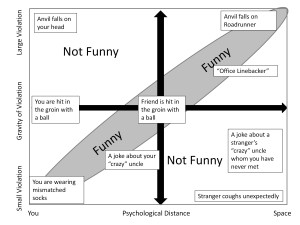You may have seen the recent headline that hockey broadcasting is soon to change now that Rogers Media has purchased the national rights to NHL games for the next 12 years, and is promising more hockey content. To most Canadians, I would imagine that this is a big deal as the hockey content had mainly been provided by TSN (Bell Media) and CBC, and the promise of even more hockey I am sure is exciting for many. Maybe I am an anomaly in this country, but I am already tired of getting NHL hockey rammed down my throat anytime I try to watch sports, and Rogers Media’s promise of more hockey content makes me shudder. TSN seemed to have this stereotypical vision (perhaps correctly?) that hockey is like heroin to Canadians who need a constant fix. Already an inordinate amount of their sports programming is focused solely on hockey, and Rogers Media seems to have the same idea. I don’t have access to their analytics, so perhaps they are correct in thinking that Canadians have an addiction to all things hockey and only hockey. But it got me thinking about brands in general, and whether there is a point when a brand is being overexposed, for example with media companies and their hockey product in Canada. As a brand manager, how does one get the right amount of exposure without hurting the brand? By striking the right balance of advertising frequency and medium, while considering your target audience.
Flying Too Far Under the Radar
The key to your brand’s success is the ability to be the first brand that comes to mind whenever customers have a problem that your product/service can fix, because then your brand will be the first one customers will try. To be first in customers’ minds, your brand needs your potential clients to know what your brand is, what your brand represents, and what problems your brand can solve. Without a plan to communicate with your customers, they simply will not know who you are, thereby making the awesomeness of your product a total waste. At the same time, too much advertising will dilute your brand and customers will deem you annoying. They know what your brand is, but will be reluctant to try it out as they don’t want to be associated with your annoying brand. Personally, although I am a fan of NHL hockey (Go Flames!), the amount of coverage, analysis, and mindless discussion about hockey has turned me off from watching it altogether.
Advertising and promotion are critical components to any business strategy, and a large part of developing this strategy is understanding the right frequency of communication necessary to attract the customers you want. Getting the frequency of your communication right has a lot to do with who your customers are and how they would like their relationships with their brands to be.
Ways to Communicate With the Consumer
Social Media has really added another level of complexity towards showcasing your brand to your audience. Traditional media such as TV, radio, billboards, magazines, etc. involve a one-way dialogue where customers do not have an opportunity to continue the conversation with the brand, and getting your brand’s message across involves simply stating, over your core customer’s desired medium, what it is your brand has to offer. The advent of social media has created a two-way dialogue between customers and the brand, thereby adding another layer of complexity to communicating with your brand’s customers – namely that they can now reply to your brand’s statement, thereby allowing for more insights to be had from the two-way conversation. Excitement over the possibilities that exist with social media for marketers has resulted in a flooding of the market, so to speak, of brands trying to get their message across over social media, in an effort to increase the touchpoints with the customer, gain insights on what they like, and grow their business.
Luxury brands, which have been notorious in the past for their desire to not be known by the masses, have been sucked into this social media excitement, and are also reaching out to wider audiences to maximise their exposure. I find instead that brands are bombarding customers with information in an effort to attract customers, without really taking a hard look at what the customers want.
An example of this can be seen with Jennifer Lopez, about 7-8 years ago when she was everywhere with her singing, acting, product lines, and was even all over tabloids with the men she was dating. At first, everyone was fascinated because she was new, exciting, and very attractive. Eventually it became too much: she was viewed as annoying, her movies were terrible, her songs weren’t much better, and her relationships became boring (while still being physically attractive). The point is, the content was lacking, she was promoting herself to everyone and people had had enough.
If a brand needs to showcase itself to its audience in order to win the battle of customers’ minds, but flooding the market with your brand only dilutes your brand equity, how does one deliver the right amount of exposure without going too far?
What Does Your Target Audience Want
When a product or service is important to someone, they generally want to hear more about it, so the key is finding out from where your core audience likes to get their information, and promote your product there. Promoting your product designed for 70 year olds through youtube commercials will not only be a waste of advertising dollars, but will annoy everyone else.
Secondly, different audiences require different amounts of penetration in order to get your message across. Some audiences like to have their favorite brands speak to them regularly, while other customers prefer a more hands off approach. Understanding what your customer’s penetration preferences are important for avoiding having a great match between brand and customer go sour (kind of like when the girl who seemed really amazing but then started calling too much and didn’t seem so amazing anymore).
The advantage of social media to marketers is that it allows brands to communicate with an audience that does not like to be spoken to, but rather spoken with. It allows for the ability to develop brand recognition and loyalty among customer segments that shun traditional media. Therefore, hammering your message through annoying promotional ads on Facebook will only serve to further alienate the very customers you are trying to reach. Like a shy deer, leave some crumbs and let them come to you.
Advertising your brand is critical towards developing awareness for your product or service and attracting the right customers, however overexposing yourself will result in your brand becoming commoditised, diluted, and annoying. While great attention has traditionally been paid to the means of communication and the message itself, attention to the frequency of interaction is also key to making everyone happy. With the ability that both Rogers and Bell have to integrate their many online and offline media platforms, I hope that by more hockey content they mean in terms of the form of media I choose to watch hockey when I want, as opposed to a bombardment of hockey on a sports (not hockey) network. Either way, it is exciting times for hockey fans in Canada.
Editors Note: It seems as though the arrival of à la carte cable pricing will allow for a customization of their cable packages giving people who want hockey all day everyday exactly what they want






 Home
Home